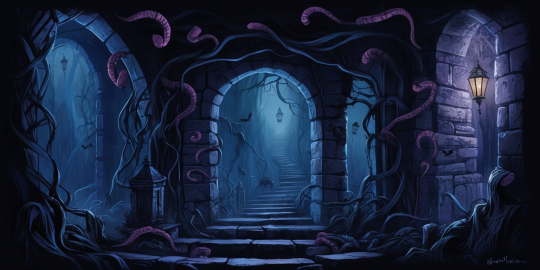
The journey through Heartworm unfolds in a labyrinth of surreal corridors, puzzling mysteries, and an atmosphere that blends retro horror with immersive exploration. Every step presents intricate puzzles, hidden keys, and evocative clues concealed in shadowy rooms and dilapidated houses. From puzzling clocks that dictate secret timings to eerie neighborhoods brimming with cryptic messages, the game encourages thoughtful navigation, creative problem-solving, and resourceful inventory management. Each environment feels meticulously crafted with distinct aesthetics and subtle narrative cues, inviting players to dive deeper into a richly layered story where every detail, from weathered furniture to flickering static on an old screen, plays a role in the unfolding mystery.
Eerie Abandoned Beginnings
The early stages of this retro horror experience cast players into the eerie world of an abandoned house and its shadowy neighborhood. In this initial act, the journey starts with a seemingly mundane moment: reclaiming a lost camera atop an old car. The desolate road leads into a once-thriving home now left to time and neglect. A door on the far left beckons, inviting those with nerves of steel to step inside. As the dim interior reveals a safe room and corridors filled with whispered histories, every object—from scattered cigarettes to misplaced keys—serves a dual purpose in progressing the maze-like narrative. The design uses muted colors and detailed environmental props to evoke a sense of melancholy and foreboding intrigue that sets the tone for the trials ahead.
Mysterious Interiors and Safe Havens
Inside the dilapidated structure, the interplay between light and shadow manifests a palpable tension, urging players to uncover hidden secrets within safe havens. Upon entering through an unassuming door near the safe room, careful observation becomes the primary tool for advancement. The safe room itself acts as a temporary respite where extraneous items are strategically discarded, streamlining the player’s inventory for future puzzles. As one navigates narrow corridors and twists between rooms, the design subtly challenges conventional navigation, urging players to question every door and corridor. Detailed textures and atmospheric lighting intensify the immersive experience, while carefully placed notes and the arrangement of objects hint at puzzles yet to be solved. This environment carefully lures the beholder into an exploration where every corner brims with latent mystery.
Puzzles of Time and Hidden Emblems
A central enigma in this act centers on a meticulously designed clock puzzle whose solution hinges on clues found in forgotten documents. Players are prompted to delve into a loft area where a discarded paper bearing a specific time—12:15—serves as the key to unlocking further secrets. Adjusting the clock’s hands accordingly unveils a concealed closet that hides an invaluable emblem piece. The sequence of actions is not simply about matching numbers but appreciating the narrative woven through objects defined by memory and history. Careful voiceovers and ambient sound design accentuate the gravity of the moment, inviting players to reflect on the symbolism implicit in such relics. The juxtaposition of functional interactions with the puzzle’s artistic presentation creates a multi-layered challenge that continuously intrigues.
Keys, Closets, and Unseen Pathways

Beyond the initial clock mystery, gameplay shifts focus toward the clever use of keys and the unlocking of hidden spaces, illustrating the game’s emphasis on resourceful exploration. In one detailed sequence, players retrieve an attic key via a methodically plotted detour through a series of interconnected rooms and corridors. The journey requires careful navigation—moving from dining rooms to bedrooms—where every found key or noted word like ROSE is crucial for subsequent door unlocks and safe rooms. The world of Heartworm bristles with secrets that only reveal themselves when the town’s forgotten relics are pieced together, creating tangible links between narrative clues and gameplay mechanics. The meticulous interplay between inventory management and environmental puzzles reinforces the game’s underlying philosophy: every item has purpose, and every unravelled mystery propels the storyline forward.
Archive: The Heartbeat of the Game
The Archive serves as a narrative and functional nexus where past exploits and future challenges converge. Upon returning from the labyrinthine corridors of the abandoned house, players find themselves in this enigmatic hub—a room replete with a giant book and a computer mirroring the safe rooms encountered earlier. Here, technological relics coalesce with ancient lore, inviting players to upload collected photos into a mysterious machine, a mechanical device that directly influences the game's outcome. The Archive is richly detailed with ambient lighting that lends an air of ceremonial reverence to routine actions like saving progress. Observant players notice how this area interlaces choices and consequences; the number of photos stored here subtly shapes the ending, embedding the narrative with a dynamic quality rooted in every decision.
Board Games and Upgraded Tools
In a delightful twist on puzzle mechanics, the game incorporates puzzles that revolve around classic board games. Sam’s bedroom introduces a chessboard that challenges players to execute a specific move—transitioning the bishop from E3 to G5—thereby earning an upgrade mod for the camera. This Burst Mod future-proofs the player’s on-screen combat by allowing simultaneous capture of multiple images, an essential feature during later encounters. The setting integrates everyday intellectual pursuits with survival mechanics, where each puzzle completion enhances the functionality of crucial tools. The transition from cerebral challenge to action-packed encounters highlights a well-balanced gameplay rhythm, merging strategic thinking with reactive combat mechanics. The elevated camera abilities not only streamline puzzle solving but also enrich the narrative landscape by subtly shifting the player’s role from observer to active participant in the unfolding mystery.
Mechanical Ingenuity in the Garage
Exploration advances into a shadowed neighborhood where the remnants of a garage serve as the stage for mechanical puzzles and inventory upgrades. Within this space, players confront a fusion of technical challenges such as adjusting fuse boxes through a precise sequence of switch activations. Successfully manipulating the fuse box not only unlocks a hidden staircase but also sets the stage for acquiring a Camera Bag—an upgrade that expands the player’s inventory capacity. The garage is rife with atmospheric tension; debris and obscured paths compel players to engage in careful observation and deliberate interaction. The game’s design thrives on these juxtaposed moments, where mundane technical tasks are elevated to symbolic acts of progression. Here, the blend of mystery and mechanical ingenuity underscores the interplay between exploration and puzzle-solving, integrating practical upgrades seamlessly into the narrative fabric.
Neighborhood Riddles and Ephemeral Lights
The transition from the claustrophobic interiors into the open yet equally enigmatic neighborhood adds a fresh dimension to Heartworm's gameplay. Streets laden with relics of everyday urbanity merge with surreal locations like the eerie store and lonely houses, each embedded with puzzles that demand precise interactions. As players navigate to Sam’s bedroom via intricate interior pathways, a chessboard puzzle reappears, reinforcing the recurring theme of mental challenges. Outside, key items—such as a House Key discovered in an abandoned store—underscore the delicate balance between risk and reward, propelling the narrative forward. In neighborhoods where light and shadow oscillate unpredictably, the aesthetic design evokes both nostalgia and suspense. Every route and every hidden trigger, from fuse boxes to locked barred doors, weaves together multiple threads of interconnecting puzzles that are as engaging intellectually as they are visually intriguing.
Warehouse Pursuits and Crowbar Conundrums
Stepping deeper into the heart of this enigmatic world, players encounter a warehouse filled with dim corridors and deceptive dead ends that test both agility and wit. The warehouse challenge is devised as a high-stakes chase sequence, where an adversary lurks among towering crates and looming shelves. Utilizing a well-timed crowbar becomes essential after solving a series of environmental puzzles involving static-filled doors and jalopy-like buses. The setting is crafted with attention to detail; every fall of a wooden plank or shifting of boxes contributes to an immersive, heart-racing pursuit that emphasizes exploration under pressure. The interplay of ambient sound effects and the subtle creaking of old structures intensify the urgency of the chase. Confronting this ordeal, players must harness both stealth and dexterity as they maneuver through a labyrinth of obstacles, ensuring that each clever interaction with the environment further cements the narrative’s suspenseful momentum.
Confronting the Arachnid Menace
The narrative reaches an adrenaline-charged apex when players face a formidable arachnid menace—a boss encounter that tests every skill honed in previous segments. This climactic battle occurs after a carefully orchestrated journey through quiet alleys and tension-filled corridors. With the Burst Mod now active, the camera becomes a true weapon, allowing players to execute rapid, successive captures against the advancing creature. The encounter is marked by a barrage of swift movements and unexpected ambush tactics by smaller surrogates of the larger foe. The game’s design here masterfully Blends strategic planning, resource allocation, and precise timing. Despite the inherent frustration of limited mobility during the encounter, the overall balance ensures that quick thinking and agility pave the way to emerging triumphant. Strategic pauses to collect healing items and additional rolls of film remind players that every tactical decision contributes to this electrifying chapter.
